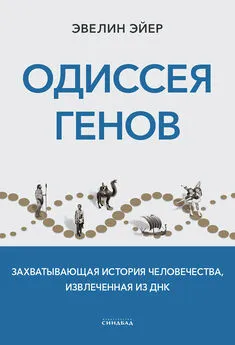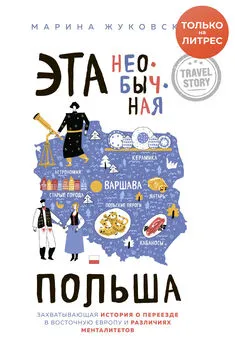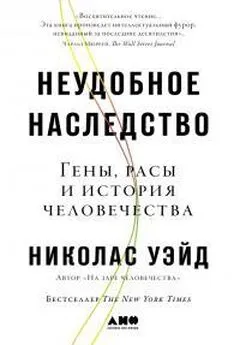Эвелин Эйер - Одиссея генов. Захватывающая история человечества, извлеченная из ДНК
- Название:Одиссея генов. Захватывающая история человечества, извлеченная из ДНК
- Автор:
- Жанр:
- Издательство:Синдбад
- Год:2021
- ISBN:978-5-00131-386-1
- Рейтинг:
- Избранное:Добавить в избранное
-
Отзывы:
-
Ваша оценка:
Эвелин Эйер - Одиссея генов. Захватывающая история человечества, извлеченная из ДНК краткое содержание
Одиссея генов. Захватывающая история человечества, извлеченная из ДНК - читать онлайн бесплатно ознакомительный отрывок
Интервал:
Закладка:
Демографический рост в сочетании с воздействием на окружающую среду (усилившимся из-за потепления климата), вероятно, вызовет новые волны мигрантов. Какое место мы отведем этим беженцам? Каждая страна должна будет дать свой ответ на этот вопрос, но решение необходимо принимать с учетом двух выводов, извлеченных из великой книги истории нашего вида.
В первую очередь мы — мигрирующий вид, и это свойство буквально записано в наших генах. Ваша ДНК способна поведать о том, что некоторые из ваших предков мигрировали на небольшие расстояния, а другие пересекали континенты. У всех у нас есть предки-мигранты. И если мы заглянем в будущее, то увидим, что у всех нынешних родителей будут потомки-мигранты!
Другой урок, который надо усвоить: самые здоровые люди живут в наиболее эгалитарных обществах. Рост, один из лучших показателей здоровья населения, коррелирует с показателем экономического равенства. По двум этим причинам мы должны строить наше будущее на основе сотрудничества и справедливости, с учетом невероятного разнообразия форм общественного устройства.
Будем надеяться, что сказочная эпопея нашего вида продолжится. С течением времени наш вид адаптировался к окружающим условиям путем биологических изменений и культурного развития. Люди мигрировали и распространились по всей планете, доказав тем самым, что наделены не только удивительной любознательностью и изобретательностью, но и невероятной способностью сотрудничать и жить вместе. Хочется верить, что человечество и дальше будет использовать эти качества, чтобы решать новые задачи и уживаться на планете, которую мы теперь обязаны защищать.
Библиография
Bokelmann, L. et al ., 2019, «A genetic analysis of the Gibraltar Neanderthals», Proceedings of the National Academy of Sciences , 116(31), p. 15610–15615.
Chen, F. et al ., 2019, «A late Middle Pleistocene Denisovan mandible from the Tibetan Plateau», Nature , 569(7756), p. 409–412.
DeCasien, A. R. et al ., 2017, «Primate brain size is predicted by diet but not sociality», Nature Ecology and Evolution , 1(5), p. 1–7.
Détroit, F. et al ., 2019, «A new species of Homo from the Late Pleistocene of the Philippines», Nature , 568(7751), p. 181–186.
Dunbar, R., 1998, «The social brain hypothesis», Evolutionary Anthropology , p. 178–190.
Green, R. E. et al ., 2010, «A draft sequence of the Neandertal genome», Science , 328(5979), p. 710–722.
Hershkovitz, I. et al ., 2018, «The earliest modern humans outside Africa», Science , 359(6374), p. 456–459.
Heyer, E. (éd.), 2015, Une belle histoire de l’Homme , Flammarion.
Hublin, J.-J. et al ., 2015, «Brain ontogeny and life history in Pleistocene hominins», Philosophical Transactions of the Royal Society B: Biological Sciences , 370(1663).
Hublin, J. J., 2009, «Out of Africa: modern human origins special feature: the origin of Neandertals», Proceedings of the National Academy of Sciences , 106(38), p. 16022–16027.
Hublin, J.-J., 2017, «The last Neanderthal», Proceedings of the National Academy of Sciences , 114(40), p. 10520–10522.
Hublin, J.-J. et al ., 2017, «New fossils from Jebel Irhoud, Morocco and the pan-African origin of Homo sapiens», Nature , 546(7657), p. 289–292.
Jónsson, H. et al ., 2017, «Parental influence on human germline de novo mutations in 1,548 trios from Iceland», Nature , 549(7673), p. 519–522.
Kaplan, H. et al ., 2000, «A theory of human life history evolution: Diet, intelligence, and longevity», Evolutionary Anthropology , 9(4), p. 156–185.
Llamas, B. et al ., 2017, «Human evolution: A tale from ancient genomes», Philosophical Transactions of the Royal Society B: Biological Sciences , 372(1713).
Meyer, M. et al ., 2016, «Nuclear DNA sequences from the Middle Pleistocene Sima de los Huesos hominins», Nature , 531(7595), p. 504–507.
Mikkelsen, T. S. et al ., 2005, «Initial sequence of the chimpanzee genome and comparison with the human genome», Nature , 437(7055), p. 69–87.
Pavard, S. et Coste, C., 2019, «Evolution of the human lifecycle», in Encyclopedia of Biomedical Gerontology , Academic Press.
Prado-Martinez, J. et al ., 2013, «Great ape genetic diversity and population history», Nature , 499(7459), p. 471–475.
Prat, S., 2018, «First hominin settlements out of Africa. Tempo and dispersal mode: Review and perspectives», Comptes Rendus — Palevol , 17(1–2), p. 6–16.
Prüfer, K. et al ., 2012, «The bonobo genome compared with the chimpanzee and human genomes», Nature , 486, p. 527–531.
Reich, D. et al ., 2010, «Genetic history of an archaic hominin group from Denisova Cave in Siberia», Nature , 468(7327), p. 1053–1060.
Sánchez-Quinto, F. et Lalueza-Fox, C., 2015, «Almost 20 years of Neanderthal palaeogenetics: Adaptation, admixture, diversity, demography and extinction», Philosophical Transactions of the Royal Society B: Biological Sciences , 370(1660).
Scally, A. et Durbin, R., 2012, «Revising the human mutation rate: implications for understanding human evolution», Nature Reviews Genetics , 13(10), p. 745–753.
Scerri, E. M. L. et al ., 2018, «Did our species evolve in subdivided populations across Africa, and why does it matter?», Trends in Ecology & Evolution , 33(8), p. 582–594.
Schlebusch, C. M. et al ., 2017, «Southern African ancient genomes estimate modern human divergence to 350,000 to 260,000 years ago», Science , 358(6363), p. 652–655.
Ségurel, L. et al ., 2014, «Determinants of mutation rate variation in the human germline», Annual Review of Genomics and Human Genetics , 15(1), p. 47–70.
Slatkin, M. et Racimo, F., 2016, «Ancient DNA and human history», Proceedings of the National Academy of Sciences , 113(23), p. 6380–6387.
Slon, V. et al ., 2018, «The genome of the offspring of a Neanderthal mother and a Denisovan father», Nature , 561(7721), p. 113–116.
Verendeev, A. et Sherwood, C. C., 2017, «Human brain evolution», Current Opinion in Behavioral Sciences , 16, p. 41–45.
Wolf, A. B. et Akey, J. M., 2018, «Outstanding questions in the study of archaic hominin admixture», PLoS Genetics, 14(5), p. 1–14.
Atkinson, E. G. et al ., 2018, «No evidence for recent selection at FOXP2 among diverse human populations», Cell , 174(6), p. 1424–1435.
Beleza, S. et al ., 2013, «The timing of pigmentation lightening in Europeans», Molecular Biology and Evolution , 30(1), p. 24–35.
Bird, M. I. et al ., 2019, «Early human settlement of Sahul was not an accident», Scientific Reports , 9(1), p. 1–10.
Canfield, V. A. et al ., 2013, «Molecular phylogeography of a human autosomal skin color locus under natural selection», G3 ( Bethesda ), 3(11), p. 2059–2067.
Cerqueira, C. C. S. et al ., 2012, «Predicting homo pigmentation phenotype through genomic data: From neanderthal to James Watson», American Journal of Human Biology , 24(5), p. 705–709.
Chaix, R. et al ., 2008, «Genetic traces of east-to-west human expansion waves in Eurasia», American Journal of Physical Anthropology , 136(3).
Colonna, V. et al ., 2011, «A world in a grain of sand: Human history from genetic data», Genome Biology , 12(11).
Crawford, N. G. et al ., 2017, «Loci associated with skin pigmentation identified in African populations», Science , 358(6365).
Dannemann, M. et Kelso, J., 2017, «The contribution of Neanderthals to phenotypic variation in modern humans», American Journal of Human Genetics , 101(4), p. 578–589.
Deng, L. et Xu, S., 2018, «Adaptation of human skin color in various populations», Hereditas , 155(1).
Donnelly, M. P. et al ., 2012, «A global view of the OCA2-HERC2 region and pigmentation», Human Genetics , 131(5), p. 683–696.
Fan, S. et al ., 2016, «Review of recent human adaptation», Science , 354(6308), p. 54–59.
Fu, Q. et al ., 2014, «Genome sequence of a 45,000-year-old modern human from western Siberia», Nature , 514(7253), p. 445–449.
Fu, Q. et al ., 2016, «The genetic history of Ice Age Europe», Nature , 534(7606), p. 200–205.
Fumagalli, M. et al ., 2015, «Greenlandic Inuit show genetic signatures of diet and climate adaptation», 349(6254), p. 1343–1347.
Günther, T. et Jakobsson, M., 2016, «Genes mirror migrations and cultures in prehistoric Europe — a population genomic perspective», Current Opinion in Genetics and Development , 41, p. 115–123.
Günther, T. et al ., 2018, «Population genomics of Mesolithic Scandinavia: Investigating early postglacial migration routes and high-latitude adaptation», PLoS Biology , 16(1), p. 1–22.
Hay, S. I. et al ., 2004, «The global distribution and population at risk of malaria: past, present, and future», The Lancet. Infectious Diseases , 4(6), p. 327–336.
Hellenthal, G. et al ., 2014, «A genetic atlas of human admixture history», Science , 343(6172), p. 747–751.
Hlusko, L. J. et al ., 2018, «Environmental selection during the last ice age on the mother-to-infant transmission of vitamin D and fatty acids through breast milk», Proceedings of the National Academy of Sciences , 115(19).
Hublin, J. J., 2015, «The modern human colonization of western Eurasia: When and where?», Quaternary Science Reviews , 118, p. 194–210.
Huerta-Sánchez, E. et al ., 2014, «Altitude adaptation in Tibetans caused by introgression of Denisovan-like DNA», Nature , 512(7513), p. 194–197.
Ilardo, M. A. et al ., 2018, «Physiological and Genetic Adaptations to Diving in Sea Nomads», Cell , 173(3), p. 569–580.
Читать дальшеИнтервал:
Закладка:









